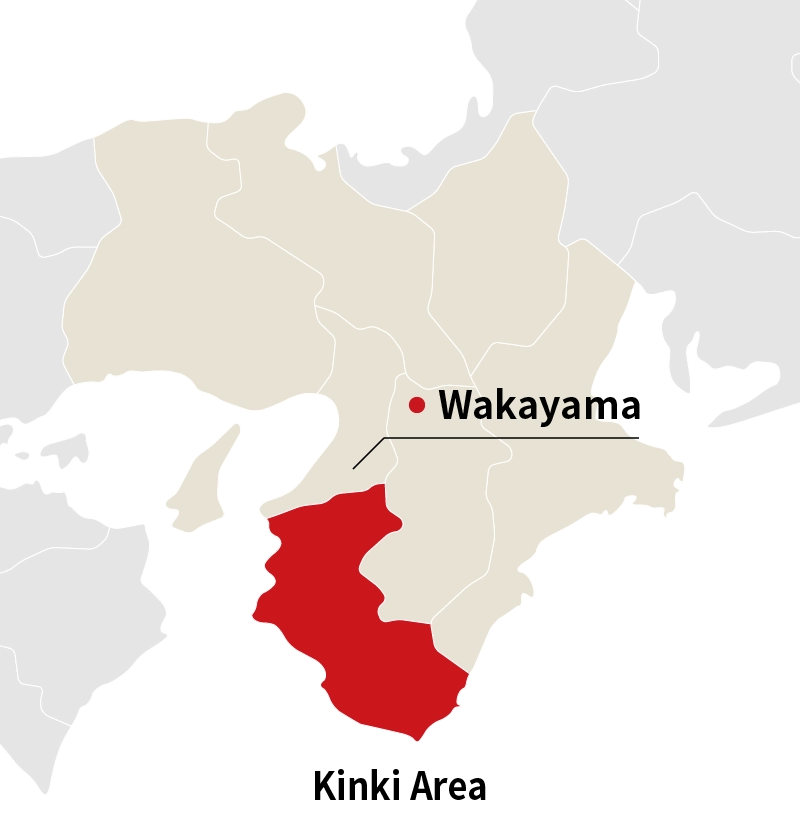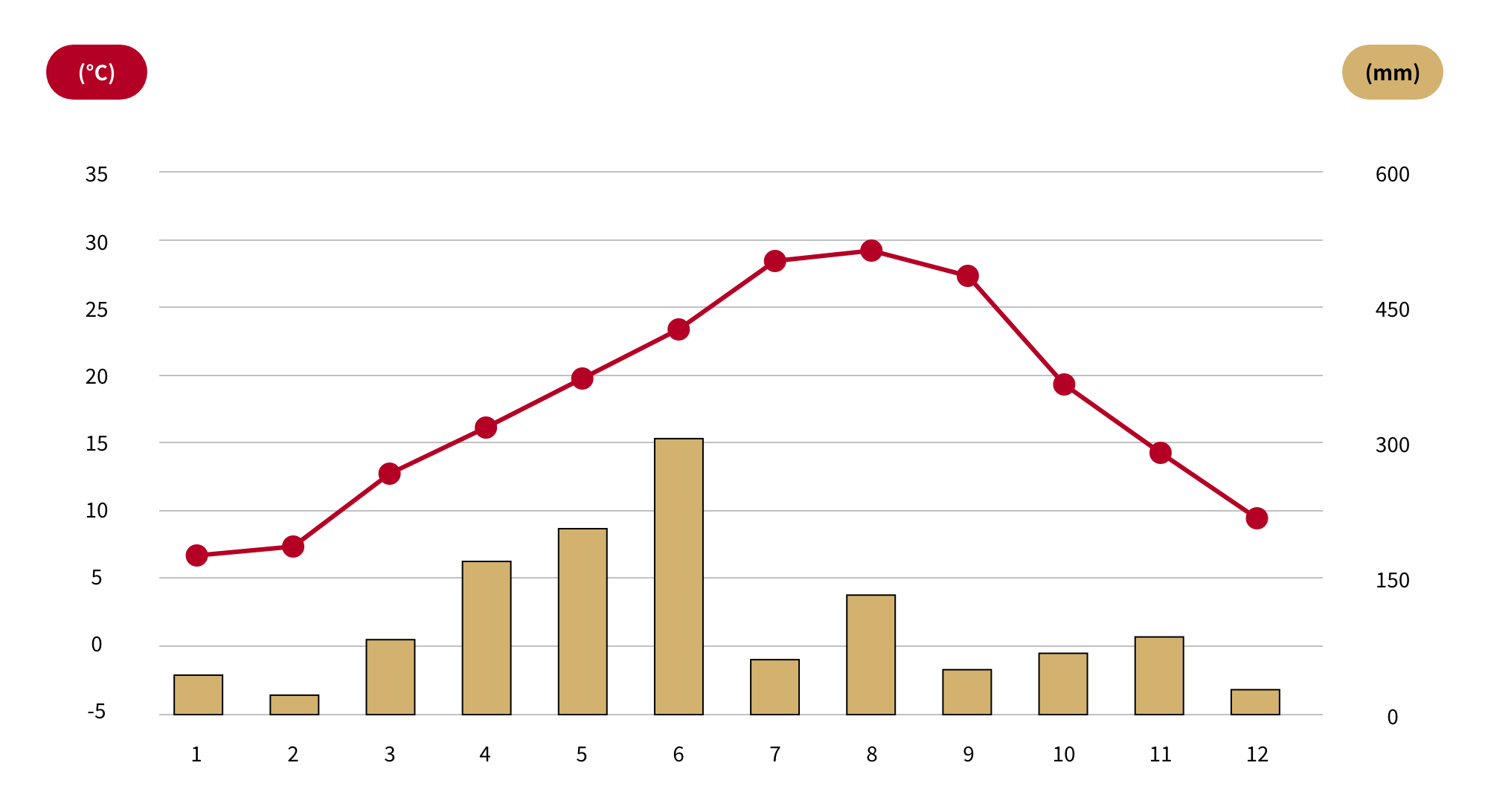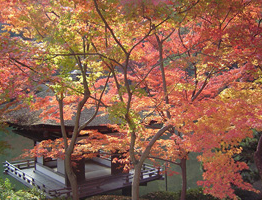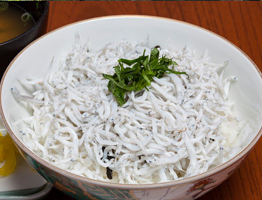일본 유학의 매력
발견! 지역별 NIPPON의 생활
- HOME
- 일본 유학의 매력
- 발견! 지역별 NIPPON의 생활
- Kinki Area
- Wakayama
Wakayama
지역 개요
와카야마현은 태평양에 면한 일본에서 가장 큰 반도인 기이반도의 남서쪽에 위치한 자연의 혜택과 역사의 자산이 넘치는 지역입니다. 또한 온난한 기후와 풍부한 자연은 산, 강, 바다의 혜택을 받아 많은 관광 자원과 생산물을 만들어 내고 있습니다.
 ※이 지도에서는 지형이나 크고 작은 섬 등을 생략하여, 일본 전 지역을 표시하고 있지 않습니다.
※이 지도에서는 지형이나 크고 작은 섬 등을 생략하여, 일본 전 지역을 표시하고 있지 않습니다.
오시는 방법
- 비행기를 이용하실 경우
-
와카야마현의 난키시라하마 지역에는 난키시라하마 공항도 있습니다.
도쿄 출발
하네다 공항
2시간 50분와카야마역
- 신칸센 또는 전철을 이용하실 경우
-
도쿄 출발
도쿄역
4시간와카야마역
지역 주민이 추천하는 명소

기이산지의 영지와 참배길
와카야마현, 나라현, 미에현에 걸쳐 구마노산잔, 고야산, 요시노/오미네의 3개의 영지와 그들을 연결하는 참배길이 등록 대상이 된 세계에서도 드문 길의 세계유산입니다.
사진 제공:공익사단법인 와카야마현 관광연맹

난키시라하마 온천
'일본 3대 온천'으로 불리는 유명 온천 마을. 역사도 매우 오래되었고 "일본서기"에도 당시 역대 천황이 방문했다는 설명이 있습니다. 지금은 호텔이나 여관이 늘어서 있는 간사이 굴지의 리조트지로 공동욕장은 숙박객뿐만 아니라 누구나 즐길 수 있다.
사진 제공:공익사단법인 와카야마현 관광연맹
지역 주민이 추천하는 음식
-

와카야마 라면
와카야마에서는 "주카(中華) 소바"라고 불리며 전문점이나 대중식당에서 나오는 현지 라면. 돈코츠를 사용하지만 크게 쇼유맛과 농후한 돈코츠 쇼유맛의 두 가지로 나뉘어집니다. 면은 약간 얇은 스트레이트 면으로 조금 부드럽게 삶은 경우가 많다고도 합니다.
-

기슈 우메보시
와카야마현산의 매실을 사용해 이나미초, 미나베초, 다나베시, 니시무로군에서 생산된 알갱이가 크고 과육이 두껍고 부드러운 우메보시. 기슈 다나베 번이 재배를 추천한 것으로 시작되어 메이지 시대에는 매실 생산에서 가공까지 일관되게 이뤄졌습니다.
기후(기온・강수량)
와카야마현은 남북으로 길어 북부와 남부의 기후가 다릅니다. 와카야마시 등 현 북부는 세토 내해식 기후에 속하여 일 년 내내 날씨와 습도가 안정되어 있고 강수량도 적습니다. 한편, 현 남부는 태평양 연안식 기후에 속하며 쿠로시오의 영향으로 온난하고 태풍의 영향을 받기 쉬워 강수량이 매우 많은 지역도 있습니다. 또한 일조 시간이 길며 여름에는 비교적 시원하고 겨울에는 따뜻한 경향을 보입니다.
월별 기온·강수량

(출처: 기상청)
물가
-
집세
37,171엔
-
광열 수도비
7,909엔
-
외식
(라면)759엔
-
식빵 1㎏
586엔
-
우유 1ℓ
241엔
※출처
- 월세
정부 통계 종합창구 '주택·토지 통계조사: 2023년'
각 현청 소재지의 연면적 29㎡ 이하 민영 차가(전용주택)의 1개월당 평균 임대료(월세 0엔 제외) - 광열 수도비
정부 통계 종합창구 '가계조사(가계수지편): 2023년'
각 현청 소재지의 세대별 '광열·수도'의 연간 지출 총계에서 월평균을 산출하여 평균 세대 인원수로 나눈 1인당 지출액 - 외식(라멘), 식빵 1kg, 우유 1ℓ
정부 통계 종합창구 '소매물가 통계조사(동향편): 2024년 8월'
관련 링크
유학생 수 국가별 랭킹
베트남
중국
인도네시아
일본 국내 총 유학생 수: 279,274명
와카야마현 총 유학생 수: 556명
2023년도 '외국인 유학생 재적 상황 조사'에서
지역 대학 목록
본 사이트의 '학교・전문분야 검색하기'에서 정보를 공개하고 있는 학교가 9개교 이하일 경우 학교명을 무순으로 게재합니다. 10개 이상의 학교가 있을 경우 본 페이지에 게재하지 않지만, 아래의 '학교・전문분야 검색하기'에서 검색하시면 학교 목록을 확인하실 수 있습니다.











